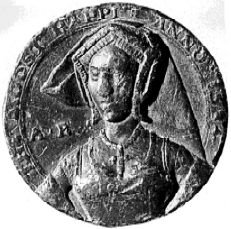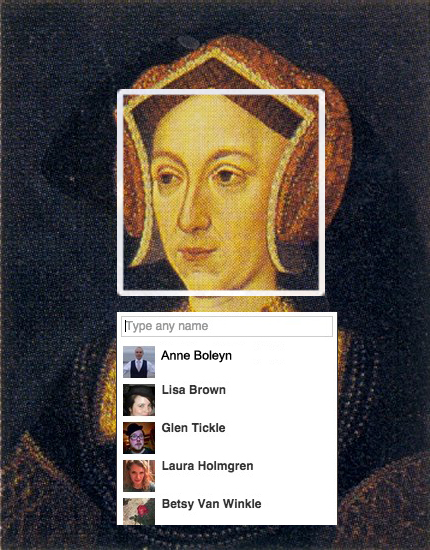Portraits of Anne Boleyn, queen of England from 1533-1536, are extremely rare and hard to verify, because many were destroyed when the king had her… dealt with so he could marry Jane Seymour. Then, when everyone was cool with her again after her daughter, Elizabeth I, became queen, it’s thought that paintings of other women were repurposed as depictions of Boleyn, which complicated things further. Now, facial recognition software has weighed in and tagged Boleyn in some of those paintings.
And no, we’re not talking Facebook facial recognition software that has, from time to time, suggested you may actually be your friend’s dad, your own dog, or a vaguely face-shaped out-of-focus object. This is a special piece of software that was designed by Amit Roy-Chowdhury, head of the video computing group at the University of California in Riverside, after his colleague, art historian Conrad Rudolph, asked him for help with facial recognition in art about three years ago.
Now, the software has proclaimed the privately-owned Nidd Hall portrait to be Boleyn despite speculation that it was actually her successor, Seymour. However, it also determined that the Anna Bolina portrait in London’s National Portrait Gallery wasn’t a sufficient match for the queen’s likeness.
Although, Facebook’s tagging suggestions are likely to be a bit more accurate. Roy-Chowdhury’s program not only has to contend with the normal hurdles of facial recognition like different angles, lighting, and drunk, sloppy photographers, but it’s limited to the few verified depictions of a person and must still account for differences in artists’ styles. For Boleyn, its facial model was built using the Moost Happi medal, which is the only uncontested depiction of the former queen.
Here’s what they were working with:

Strangely, the software also identified Boleyn in the majority of Picasso’s work.
(image via: Lisby)
That’s why Roy-Chowdhury mentioned to The Guardian that the computer’s results are more another piece of evidence for debate than they are a hard answer. He said, “These portraits have some importance. They probably represent someone of social standing, or some important event, and we often want to identify who is the person in the portrait. What the computer gives at the end is another source of evidence for the discussions that have been going on about these questions.”
(via Gizmodo, image via wikimedia)
Are you following The Mary Sue on Twitter, Facebook, Tumblr, Pinterest, & Google +?









Published: Feb 16, 2015 04:49 pm